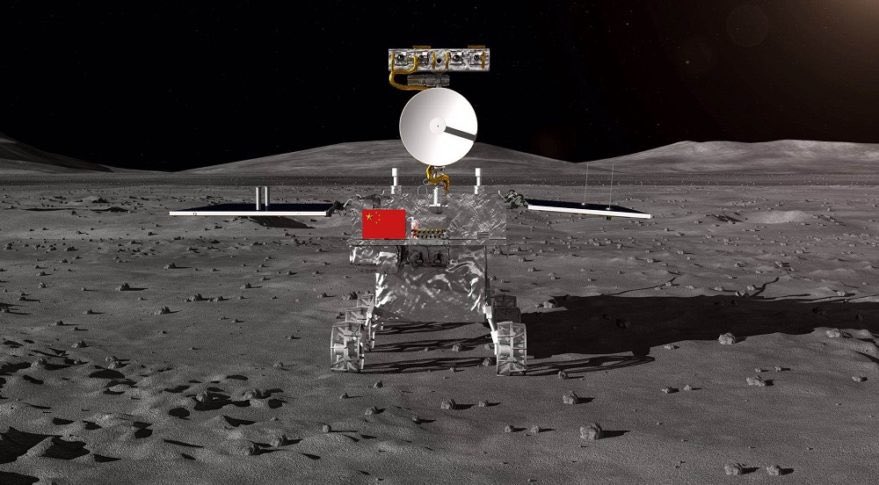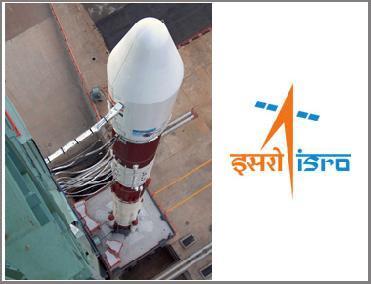
A Twitter image.
BEIJING (PTI): China's Chang'e-4 lunar rover scripted history Thursday when it made the first-ever soft landing on the far side of the moon and sent back close-up images of the previously unexplored region, a giant leap for cosmic exploration and a major boost to the Communist nation's quest to become a space superpower.
Chang'e-4, named after a Chinese moon goddess and comprising a lander and a rover, touched down at the preselected landing area at 177.6 degrees east longitude and 45.5 degrees south latitude on the far side of the moon at 10:26 am (Beijing time), China National Space Administration (CNSA) said.
The lunar explorer landed on the far side of the moon and has already sent back its first pictures from the surface, which were shared by state media.
The pioneering achievement is another demonstration of China's ambitions to be a space power. The country aims to land a crewed flight on the moon in the coming decade.
The US space agency NASA congratulated Chinese scientists on their success.
"Congratulations to China's Chang'e-4 team for what appears to be a successful landing on the far side of the Moon. This is a first for humanity and an impressive accomplishment!" NASA administrator Jim Brindestine tweeted.
"As part of the international science community, we look forward to learning about this rather unexplored part of our Moon exploration," said Thomas Zurbuchen, associate administrator for NASA's Science Mission Directorate.
The robotic spacecraft is carrying instruments to analyse the unexplored region's geology and will conduct biological experiments.
The first-ever soft landing is being seen as a major milestone in space exploration because unlike previous moon missions that have landed on the Earth-facing side, this is the first time any craft has landed on the unexplored and rugged far side of the moon.
The successful landing formally inaugurated the world's first expedition to the far side that never faces the Earth and is expected to fulfil scientists' long-held aspiration to closely observe the enormous region, state-run China Daily reported.
Though the far side has been extensively photographed by spacecraft, starting with a Soviet probe in 1959, no probe had ever made a soft landing onto it. Scientists around the world have not been able to conduct close observations and surveys of the region for decades.
The probe was launched by a Long March-3B carrier rocket on December 8 from the Xichang Satellite Launch Centre in Sichuan Province.
It landed on the Von Karman crater in the South Pole-Aitken basin and then sent back a picture of the landing site shot by one of the monitor cameras on the probe's lander, marking the world's first image taken on the moon's far side.
The picture, published by the China National Space Administration, shows the place where Chang'e 4's rover will be heading to roam and survey.
Tidal forces on Earth slow the moon's rotation to the point where the same side always faces Earth. The other side, most of which is never visible from Earth, is the far side of the moon.
Direct communication with the far side of the moon, however, is not possible, which is one of the many challenges for the Chang'e-4 lunar probe mission.
China launched a relay satellite, named Queqiao, in May, to set up a communication link between the Earth and Chang'e-4 lunar probe.
This is the first time an attempt is made to explore the far side of the moon. Since the moon's revolution cycle is the same as its rotation cycle, the same side always faces Earth.
The far side of the moon is the hemisphere that never faces Earth, due to the moon's rotation. It is sometimes mistakenly referred to as the "dark side of the moon," even though it receives just as much sunlight as its Earth-facing side.
The Chang'e-4 mission will be a key step in revealing the moon's mysterious side, a report by state-run Xinhua news agency said.
The scientific tasks of the Chang'e-4 mission include low-frequency radio astronomical observation, surveying the terrain and landforms, detecting the mineral composition and shallow lunar surface structure, and measuring the neutron radiation and neutral atoms to study the environment on the far side of the moon, according to CNSA.
Chang'e-4 mission has four scientific payloads developed by scientists from the Netherlands, Germany, Sweden and Saudi Arabia.
Chang'e 4 is the fourth lunar probe launched by China since the country's lunar programme was opened in 2004.
Chang'e-4 includes two main parts: the main lander weighing about 2,400 pounds and a 300-pound rover. By comparison, NASA's Opportunity rover on Mars weighs about 400 pounds, and the Curiosity rover there is much bigger, at 2,000 pounds.
The spacecraft is largely a clone of Chang'e-3, which landed on the moon in 2013.
Named after the goddess of the moon in Chinese legends, the first Chang'e spacecraft was launched in 2007 to verify China's lunar probe technology, obtain lunar images and perform scientific surveys.
The Chang'e 2 followed in 2010 to carry out high-definition imaging of the moon and investigate landing conditions for the Chang'e 3.
Chang'e 3 landed on the moon in 2013. Chang'e 3 released the first Chinese lunar rover, Yutu, on the moon. It worked there for around 1,000 days.
 Previous Article
Previous Article Next Article
Next Article












The Indian Air Force, in its flight trials evaluation report submitted before the Defence Ministry l..
view articleAn insight into the Medium Multi-Role Combat Aircraft competition...
view articleSky enthusiasts can now spot the International Space Station (ISS) commanded by Indian-American astr..
view article